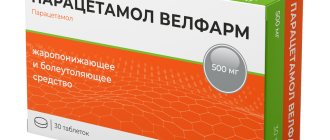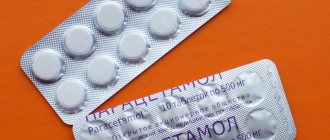Home | About us | Delivery | Advertisers | Login | Registration
The pharmacy is closed on Sundays and holidays.
- Medicines
- dietary supplementsVitamins
- Categories from A to Z
- Brands from A to Z
- Products from A to Z
- Medical equipment
- beauty
- Child
- Care
- Honey products appointments
- Herbs and herbal teas
- Medical nutrition
- Journey
- Making medicinesStock
Pharmacy online is the best pharmacy in Almaty, delivering medicines to Almaty. An online pharmacy or online pharmacy provides the following types of services: delivery of medicines, medicines to your home. Online pharmacy Almaty or online pharmacy Almaty delivers medicines to your home, as well as home delivery of medicines in Almaty.
my basket
Apteka84.kz is an online pharmacy that offers its customers medicines, medicinal and decorative cosmetics, dietary supplements, vitamins, baby food, intimate products for adults, medical equipment and thousands of other medical and cosmetic products at low prices. All data presented on the Apteka84.kz website is for informational purposes only and is not a substitute for professional medical care. Apteka84.kz strongly recommends that you carefully read the instructions for use contained in each package of medicines and other products. If you currently have any symptoms of the disease, you should seek help from a doctor. You should always tell your doctor or pharmacist about all the medicines you take. If you feel you need further help, please consult your local pharmacist or contact our GP online or by telephone.
© 2021 Pharmacy 84.
Paracetamol Extratab
ATX code: N02BE51, Registration number: LSR-004857/10
Dosage form: tablets
Composition: for 1 tablet:
active ingredients - paracetamol - 0.5 g, ascorbic acid - 0.15 g
excipients: hydroxypropyl methylcellulose (hypromellose), polyethylene glycol 6000 (macrogol 6000), corn starch, stearic acid
Description: Tablets are white, biconvex, oblong in shape with rounded ends, scored on one side. “Slight marbling” is allowed.
Pharmacotherapeutic group: Combined analgesic (non-narcotic analgesic + vitamin)
Pharmacodynamics: Paracetamol has analgesic and antipyretic effects. The drug blocks cyclooxygenase 1 and 2 mainly in the central nervous system (CNS), affecting the centers of pain and thermoregulation. In inflamed tissues, cellular peroxidases neutralize the effect of paracetamol on cyclooxygenase, which explains its almost complete lack of anti-inflammatory effect. The drug does not have a negative effect on water-salt metabolism (sodium and water retention) and the mucous membrane of the gastrointestinal tract (GIT), due to the lack of influence on the synthesis of prostaglandins in peripheral tissues. The possibility of methemoglobin formation is unlikely.
Ascorbic acid (vitamin C) is not formed in the human body and comes only from food.
Physiological functions: is a cofactor in some hydroxylation and amidation reactions - transfers electrons to enzymes, providing them with a reducing equivalent. Participates in the reactions of hydroxylation of proline and lysine residues of procollagen with the formation of hydroxyproline and hydroxylysine (post-translational modification of collagen), oxidation of lysine side chains in proteins with the formation of hydroxytrimethyllysine (in the process of kartinite synthesis), oxidation of folic acid to folinic acid, metabolism of drugs in liver microsomes and hydroxylation dopamine to form norepinephrine.
Increases the activity of amidating enzymes involved in the processing of oxytocin, antidiuretic hormone and cholecystokinin. Participates in steroidogenesis in the adrenal glands.
The main role at the tissue level is participation in the synthesis of collagen, proteoglycans and other organic components of the intercellular substance of teeth, bones and capillary endothelium.
Pharmacokinetics: Paracetamol. Absorption – high. The time required to achieve maximum concentration (TCmax) is 0.5-2 hours, maximum concentration (Cmax) is 5-20 μg/ml. Communication with plasma proteins - 15%. Penetrates the blood-brain barrier (BBB). The volume of distribution varies from 0.8 to 1.36 l/kg body weight. Less than 1% of the dose of paracetamol taken by a nursing mother passes into breast milk. The therapeutically effective concentration of paracetamol in plasma is achieved when administered at a dose of 10-15 mg/kg. Metabolized in the liver in three main ways: conjugation with glucuronides, conjugation with sulfates, oxidation by microsomal liver enzymes. In the latter case, toxic intermediate metabolites are formed, which are subsequently conjugated with glutathione, and then with cysteine and mercapturic acid. The main isoenzymes of cytochrome P450 for this metabolic pathway are the isoenzyme CYP2E1 (mainly), CYP1A2 and CYP3A4 (minor role). With glutathione deficiency, these metabolites can cause damage and necrosis of hepatocytes.
Additional metabolic pathways include hydroxylation to 3-hydroxyparacetamol and methoxylation to 3-methoxyparacetamol, which are subsequently conjugated to glucuronides or sulfates.
In adults, glucuronidation predominates, in newborns (including premature babies) and small children - sulfation. Conjugated metabolites of paracetamol (glucuronides, sulfates and conjugates with glutathione) have low pharmacological (including toxic) activity.
The half-life (T1/2) is 1-4 hours. It is excreted by the kidneys in the form of metabolites, mainly conjugates, only 3% unchanged. In elderly patients, drug clearance decreases and T1/2 increases.
Ascorbic acid. Communication with plasma proteins - 25%.
The normal concentration of ascorbic acid in plasma is approximately 10-20 μg/ml. Easily penetrates into leukocytes, platelets, and then into all tissues, the highest concentration is achieved in the glandular organs, leukocytes, liver and lens of the eye, penetrates the placenta. The concentration of ascorbic acid in leukocytes and platelets is higher than in erythrocytes and plasma. In deficiency states, leukocyte concentrations decline later and more slowly and are considered a better measure of deficiency than plasma concentrations.
Metabolized primarily in the liver into deoxyascorbic acid and further into oxaloacetic acid and ascorbate-2-sulfate.
It is excreted by the kidneys, through the intestines, with sweat, breast milk unchanged and in the form of metabolites.
When high doses are prescribed, the rate of elimination increases sharply. Smoking and drinking ethanol accelerate the destruction of ascorbic acid (conversion into inactive metabolites), sharply reducing reserves in the body.
Excreted during hemodialysis.
Indications for use: Paracetamol EXTRATAB is used as:
antipyretic for infectious and inflammatory diseases (ARVI, including influenza),
· an anesthetic for mild to moderate pain (headache, toothache) of non-inflammatory origin, for neuralgia, pain in muscles and joints, algodismenorrhea.
Contraindications: Severe kidney and liver diseases, including renal and/or hepatic failure, glucose-6-phosphate dehydrogenase deficiency, erosive and ulcerative lesions of the gastrointestinal tract (in the acute phase), gastrointestinal bleeding, children under 6 years of age, pregnancy (Ι-ΙΙΙ trimesters), lactation period.
With caution: Erosive and ulcerative lesions of the gastrointestinal tract (history), congenital hyperbilirubinemia (Gilbert, Dubin-Johnson and Rotor syndromes).
Blood diseases (thrombocytopenia, leukopenia, agranulocytosis), sideroblastic anemia, thalassemia.
Hemochromatosis, hyperoxaluria, urolithiasis.
Bronchial asthma. Alcoholism.
Use during pregnancy and lactation: There are no data on studies of the effectiveness and safety of the combination of paracetamol and ascorbic acid in pregnant and lactating women. Thus, it is not possible to assess the possible risk-benefit ratio, and therefore the use of the drug in these categories of patients is not recommended.
Directions for use and dosage: Adults and children over 12 years of age (with body weight over 50 kg) take 1 tablet orally 3-4 times a day with an interval between doses of 4-8 hours. Children from 6 to 12 years old - 1/2 tablet, maximum daily dose - 2 tablets.
The maximum duration of treatment for children is 3 days.
The maximum duration of treatment for adults is no more than 5 days when prescribed as an analgesic and no more than 3 days when prescribed as an antipyretic.
Side effects: , Paracetamol.
From the digestive system: rarely - nausea, very rarely - vomiting, diarrhea, pain in the epigastric region, jaundice, pancreatitis and increased activity of liver enzymes. Allergic reactions: rarely - skin rash, itching, urticaria, angioedema).
From the hematopoietic organs and lymphatic system: very rarely - anemia, leukopenia.
Other: weakness.
Ascorbic acid.
Allergic reactions: skin rash, skin hyperemia.
Laboratory indicators: thrombocytosis, hyperprothrombinemia, erythropenia, neutrophilic leukocytosis, hypokalemia, glycosuria.
Overdose: Symptoms (due to paracetamol): during the first 24 hours after administration - pallor of the skin, nausea, vomiting, anorexia, abdominal pain, impaired glucose metabolism, metabolic acidosis. Symptoms of liver dysfunction may appear 12-48 hours after an overdose. In case of severe overdose - liver failure with progressive encephalopathy, coma, death, acute renal failure with turbular necrosis (including in the absence of severe liver damage), arrhythmia, pancreatitis. The hepatotoxic effect in adults occurs when taking 10 g or more. Rarely, liver failure develops rapidly and can be complicated by renal failure (tubular necrosis).
Treatment: administration of SH-group donors and precursors for the synthesis of glutathione - methionine - within 8-9 hours after an overdose and acetylcysteine - within 8 hours.
The need for additional therapeutic measures (further administration of methionine, intravenous administration of acetylcysteine) is determined depending on the concentration of paracetamol in the blood, as well as on the time elapsed after administration.
Symptoms (due to ascorbic acid): diarrhea, nausea, irritation of the gastrointestinal mucosa, flatulence, spastic abdominal pain, frequent urination, nephrolithiasis, insomnia, irritability, hypoglycemia.
Treatment: symptomatic, forced diuresis.
Interaction with other medicinal products: If you are taking other medicinal products simultaneously with Paracetamol EXTRATAB, you should consult your doctor.
Paracetamol reduces the effectiveness of uricosuric drugs.
With long-term and regular use, paracetamol potentiates the effect of warfarin and other coumarin derivatives and increases the risk of bleeding.
Concomitant use of cholestyramine leads to a decrease in the absorption of paracetamol (and a weakening of the effects of paracetamol).
Metoclopramide and domperidone increase the absorption of paracetamol.
The simultaneous use of paracetamol and non-steroidal anti-inflammatory drugs (metamizole sodium, acetylsalicylic acid, ibuprofen, etc.) increases the risk of developing “analgesic” nephropathy and renal papillary necrosis, end-stage renal failure.
The simultaneous use of paracetamol and chloramphenicol may be accompanied by an increase in T1/2 of chloramphenicol up to 5 times.
Inducers of microsomal liver enzymes (phenytoin, ethanol, barbiturates, rifampicin, phenylbutazone, tricyclic antidepressants) increase the production of hydroxylated active metabolites, which makes it possible to develop severe intoxications even with small overdoses.
Salicylamide increases T1/2 of paracetamol, which leads to the accumulation of paracetamol and, accordingly, increased formation of its toxic metabolites.
The simultaneous use of paracetamol and ethanol may increase the hepatotoxicity of paracetamol and also contribute to the development of acute pancreatitis.
Diflunisal increases the plasma concentration of paracetamol by 50% - the risk of developing hepatotoxicity.
You should not simultaneously use other medicines containing paracetamol, as well as other non-narcotic analgesics. The simultaneous use of other drugs should be agreed with a doctor.
Ascorbic acid increases the concentration of benzylpenicillin and tetracyclines in the blood, at a dose of 1 g/day increases the bioavailability of ethinyl estradiol (including that included in oral contraceptives), improves the absorption of Fe preparations in the intestines (converts ferric iron to ferrous), can increase the excretion of iron when used simultaneously with deferoxamine, it reduces the effectiveness of heparin and indirect anticoagulants.
Acetylsalicylic acid, oral contraceptives, fresh juices and alkaline drinks reduce the absorption and absorption of ascorbic acid.
When used simultaneously with acetylsalicylic acid, the urinary excretion of ascorbic acid increases and the excretion of acetylsalicylic acid decreases.
Acetylsalicylic acid reduces the absorption of ascorbic acid by approximately 30%.
Ascorbic acid increases the risk of developing crystalluria during treatment with salicylates and short-acting sulfonamides, slows down the excretion of acids by the kidneys, increases the excretion of drugs that have an alkaline reaction (including alkaloids), and reduces the concentration of oral contraceptives in the blood.
Quinoline drugs, CaCl2, salicylates, corticosteroids, when used for a long time, deplete ascorbic acid reserves.
When used simultaneously, ascorbic acid reduces the chronotropic effect of isoprenaline.
With long-term use or use in high doses, ascorbic acid can interfere with the interaction of disulfiram and ethanol; in high doses, it increases the excretion of mexiletine by the kidneys.
Barbiturates and primidone increase the excretion of ascorbic acid in the urine.
Ascorbic acid reduces the therapeutic effect of antipsychotic drugs (neuroleptics) - phenothiazine derivatives, tubular reabsorption of amphetamine and tricyclic antidepressants.
Special instructions: Do not exceed the recommended doses of Paracetamol EXTRATAB.
For hyperthermia lasting more than 3 days and pain for more than 5 days, consult a doctor.
After 5 days of using the drug Paracetamol EXTRATAB, it is necessary to monitor the peripheral blood picture and the functional state of the liver.
Paracetamol distorts laboratory tests when quantifying the concentration of glucose and uric acid in plasma. To avoid toxic liver damage, paracetamol should not be combined with drinks containing alcohol, or taken by persons prone to alcohol abuse.
There is evidence that frequent use of drugs containing paracetamol leads to worsening of the symptoms of bronchial asthma.
The simultaneous use of other drugs should be agreed with a doctor.
Impact on the ability to drive vehicles and other technical equipment:
There is no data on the effect of the drug Paracetamol EXTRATAB on the ability to drive vehicles and other technical equipment.
Release form: Tablets 500 mg + 150 mg.
5, 6, 7, 10, 12, 15 tablets in a blister pack made of polyvinyl chloride film and printed varnished aluminum foil.
1, 2, 3, 4 or 5 blister packs together with instructions for medical use are placed in a cardboard pack.
Storage conditions: In a dry place, protected from light, at a temperature not exceeding 25 °C.
Keep out of the reach of children.
Shelf life: 2 years. Do not use after the expiration date stated on the packaging.
Conditions for dispensing from pharmacies: Without a prescription.
,




